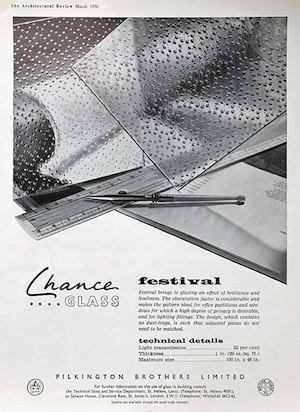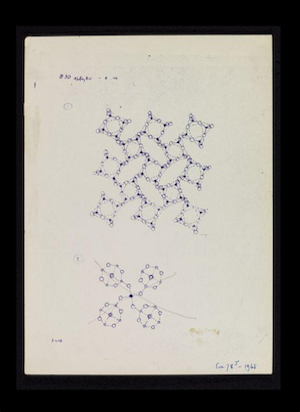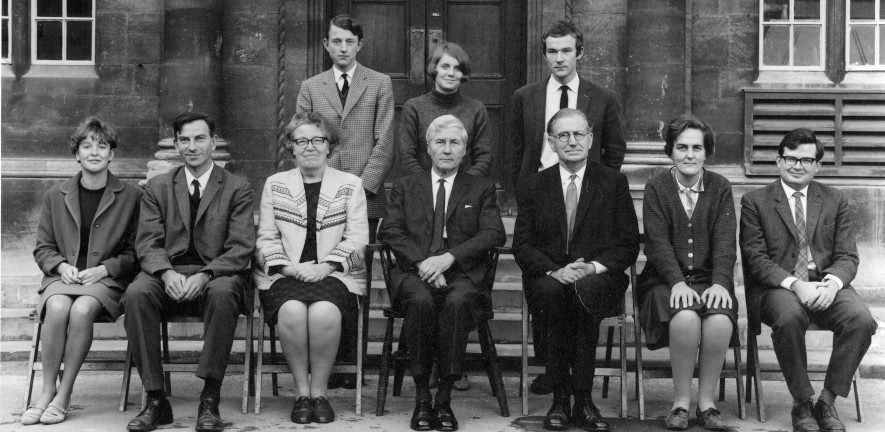
Close-up of the Festival glass on Dr Sally Boss's office door, courtesy Nathan Pitt
Have you ever spent a penny in the Department of Chemistry? If so, you may have unwittingly seen a small piece of British design history.
The glass in the mezzanine toilet doors was featured at the 1951 Festival of Britain, and was installed when the Lensfield Road building was built later in the decade. Its discreet spotted pattern represents the crystal structure of an apophyllite mineral, (K,Na)Ca4Si8O20(F,OH).8H2O, derived from a crystal diagram produced by William Hodge Taylor of the Cavendish Laboratory.
So how did Taylor’s crystal pattern come to be made into glass?
The use of crystal patterns in commercial design was the brainchild of Dr Helen Megaw, another Cambridge crystallographer and fellow of Girton College. She worked with the Council of Industrial Design to form the Festival Pattern Group and provided a variety of British manufacturers with crystal patterns (both crystal structure diagrams and electron density maps) to use as a basis for design.
The aims were to showcase Britain’s pre-eminence in the field of crystallography, to bring to the general public the beauty of the natural world at the atomic level, and to kickstart a new genre of pattern design.
Megaw had harboured the idea since the 1930s when she designed Christmas cards based on crystal structures and embroidered a cushion as a wedding present for Dorothy Crowfoot Hodgkin. She saw that the repeating patterns in crystals would work well as wallpaper and textile designs and sought out the most visually attractive, enlisting the cooperation of crystallographers in Cambridge (Lawrence Bragg, John Kendrew, Max Perutz, W H Taylor) and around the country (J D Bernal, Dorothy Crowfoot Hodgkin, Kathleen Lonsdale and others).
Members of the Festival Pattern Group produced around 80 designs in textiles, papers, ceramics, metals and glass. Their products were presented at the Festival of Britain in the Regatta Restaurant on the South Bank and in the Exhibition of Science in Kensington.
The panes in the department were manufactured by Birmingham company Chance Bros. under the name Festival.
Of all the designs produced, the Festival glass was arguably the most successful. At the close of the Festival a representative of Chance Bros. commented: "We claim that our Festival pattern met with greater success than we had a right to anticipate, but whether it is a pattern that will maintain general favour remains to be seen." He need not have worried; it was one of the few designs to make it into commercial production and was especially popular in the glazed doors of 1960s kitchen wall cabinets. Its popularity endured for more than twenty years, with production continuing until the mid 1970s, but it is rarely seen today.
Next time you are in the Lensfield Road building, be sure to take a comfort break and pay close attention to your surroundings. The vintage glass can also be found in several office doors on the first and second floors.
Clockwise below: Advert for Festival glass, courtesy Pilkington; crystal diagram by Helen Megaw used as part of the Festival Pattern Group, courtesy the Design Council; Helen Megaw (front row, third from left) and WH Taylor (centre front) with colleagues in front of the Cavendish Laboratory circa 1968, courtesy Mike Glazer.



